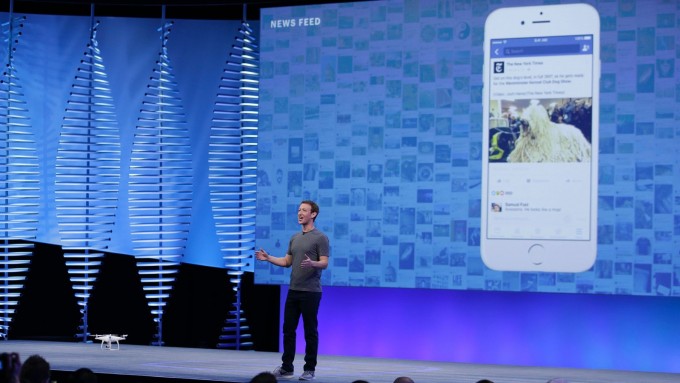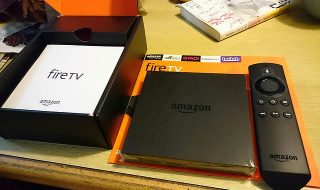
Think back to Facebook in 2016 – it’s been a pretty big year for emoji lovers with the introduction of reactions – and yet still no dislike button! The new Marketplace tab has proven a success as it undertakes its first attempts to integrate Shopify and Ebay-type sites with local businesses, and now Facebook Live is trying to lead the online video market too. I think it’s safe to say that 2016 has been all about the standardization of platforms, and it’s obviously working for them. We are expecting more of the same over the next 12 months or so. Here are some of our predictions.
Augmented reality
One of Facebook’s major acquisitions this year has been Masquerade, a sort of Snapchat alternative with overlaying filters and face-altering masks. It’s anticipated that in 2017 Facebook will offer many more Snapchat-esque features, including disappearing messages. Mark Zuckerberg sang the praises of augmented reality and Pokemon Go’s uses of it at their recent Q2 earnings call. He predicts that “the phone is probably going to be the mainstream consumer platform [where] a lot of these AR features first become mainstream, rather than a glasses form factor that people will wear on their face.” After the popularity of the Pokemon Go AR and Snapchat lenses, we reckon the Facebook augmented reality route is a pretty safe bet.
Facebook demos social augmented reality
News and trending stories
Continuing along the theme of standardization of platforms, Facebook went all in with trending news stories and instant articles, in a slightly Twitter way in 2016. The trending news bar down the right side of the page is now used for instant articles, which load “up to ten times faster than the web”. It is expected that this feature will continue to be developed over the coming year.
Video above text
Some people (mainly Mark Zuckerberg) expect that the new camera option that is currently under development will replace the text box as the default status tool. As mentioned previously, this will include the additions of Snapchat like filters, and shows a general theme moving away from the use of text.
It’s also expected that monetized live video will also be rolled out. In a similar way to YouTube, ads will be placed either in among or alongside the live video, or during breaks in live events. Zuckerberg announed at the Q2 earnings call that 500 million people watch 100 million hours every day, so this money making venture seems an inevitable push to continue the upwards trajectory in their profits, as can be seen if you read Money Morning’s report.

8 Ways to Use Facebook Video for More Engagement
Business changes
It was announced this year that a messenger for business would be rolled out in the coming months as a direct connection to brands. Already 33,000 automated bots have been launched, and many many more are expected. These bots are created to automate simple customer interactions, allowing companies to cut down on human labor costs. There is a call for Facebook to simplify the process by which these bots can be created, so that smaller brands may also benefit. It is seen as a move to get bots to promote brands from a more individualized stand point, so that the pressure is off Facebook to do the promotions for them. It’s aim is to encourage more users to interact directly with companies through Facebook, rather than over the phone or on the company’s personal website, to boost the platform and advertising revenue. There’s even talk of medical bots that can offer advice based on the input of symptoms, like a robot doctor – it’s all very futuristic.
Call To Action options for businesses
Sticking to the business side of things, a Call To Action (CTA) button for local pages is in the process of being tested, so that people can directly interact with a business page without the need for conversation. For example, takeaway food companies with a Facebook page can utilise a CTA button for direct orders. Facebook think that this will allow small local businesses to compete in the local economy more effectively, as they may not be able to afford the time and money to utilise mobile functions and web apps.
Search functions
According to Zuckerberg, Facebook now facilitates 1.5 billion searches a day. He announced that, as part of their five year plan, they aim to utilise this function more readily. It turns out, people aren’t just using the Facebook search function to stalk their ex girlfriends. It’s also commonly used to find local businesses, individuals, and musicians. A professional services search function has already been added to the desktop version, useful for finding local businesses who have a Facebook page. In the same way as the introduction of the Facebook Marketplace, this demonstrates their desire to align with user behavior and facilitate user activity.

Facebook is using artificial intelligence to become a better search engine
The new recommendations and events tool allows users to call out for recommendations from their friends on a variety of topics in a way the Google can’t. It allows personalised responses to questions, that we can’t get from a search engine. It is expected that we will see more from this function over 2017.
The general theme of changes over the latter part of 2016 and going into 2017 seems to be leaning towards improved usability for businesses. The search function’s new additions, including the Marketplace tab, are all geared around helping local businesses improve their reach. The CTA function will allow small businesses who don’t have the facilities for a large online presence to get out there, and with a bit of luck, the messenger bots will become more user friendly for smaller businesses too. On the social side of things, it looks like Facebook is going in the direction of more transient communications through short, disappearing videos, filters, and augmented reality.
The inertia facing a business giant the size of Facebook must be incredible. Trying to stay ahead of the market is a mammoth task, but it looks to be taking a pretty interesting direction. With a focus on usability, not just socialising, this is starting to look like the new wave of social media.






